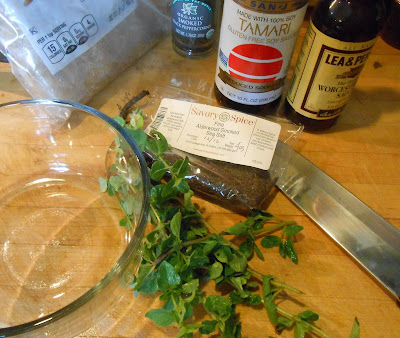So I finally wrestled Picasa to the ground. I don't know why it is so hard for me to use. Nothing is intuitive on it. Every thing I want to do has some name or process that doesn't make sense to me. But the good news is: here are pictures!
Making a button from recycled copper from scratch:
These are just some left over bits of copper. Using the hardy hole in the anvil and the rounded side of the ball-peen hammer, I start forming the top of the button. It's fairly thin copper, so I don't make it too deep. I always wear gloves, I find that when I hammer myself instead of the copper, it hurts less.
 |
| Forming the button |
Next I use this cool gadget that punches holes in metal. I know it has some specific name, but I just call it the Metal Punch.
 |
| Metal punch out the holes |
At this point, I cut the button top out. I could have done that later in the process which has it's advantages, but I wanted to see it more button-y sooner.
 |
| Cut out the top of the button |
The bottom plate has holes punched in it that should hopefully match the holes in the top. That is a bit of a tough task, but I've figured out a way to do it that seems to be working well. It took a couple of hours of experimenting!
 |
| The bottom plate punched with holes |
Then using tubing that just slips into the holes (here is where you see how well you lined up the holes top and bottom!) I cut the tubing just a tiny bit longer than the button is tall with a jeweler's saw.
 |
| Cut copper tube just a bit longer than the button is thick |
The tool is homemade and is used to widen the tube. It's tricky as the tube has to flare out on both sides and not fall out. I work gently and flip it over often.
 |
| Flare the tube out |
 |
| Hollow rivets! |
These are called "hollow rivets". This is how the button is sewn onto the sweater, hat, etc. Once the tube is flared out, then I carefully roll/flatten it on both sides. It's pretty cool to do. It's always magic to me.
 |
| Almost a button |
I then cut the extra bottom plate off. If I hadn't of cut the button top off earlier, I'd be cutting 2 thickness of copper sheet. Not fun.
 |
| A button, it's about the size of a quarter |
I should have put a coin there for reference. But here is the button! I made about a dozen of them, mostly bigger and with some cool surface decoration/texture this week. I can hardly wait to sell these! It's been a blast making them! I have so many ideas for other things to do.
Meanwhile back in the kitchen, I'm dyeing with walnut hulls!
 |
| Walnuts in the paint strainer bag |
I love paint strainer bags! I get them at the local paint store. I like the ones that have elastic on the top. I put the bag in my pot, fill it with water, add my dyestuffs and simmer. When the dye is ready, I just pull out the bag and let it drain into a bucket to get every last drop of color. Then I can just dump out the used dye stuff. The mesh is fine enough that there is very little vegetable matter in the dye to get in the fiber.
 |
| Worsted and fingering |
These skeins above have had 2 dips in the walnut dye. I simmer then for at least a couple of hours, then I let the pot sit overnight before I take the fiber out. A lot of color still washes out, but I am getting a good brown without any additional mordant.
I sure like these browns. Pretty!
We are opening up our strawbale studio for tours this weekend! The Loveland Art Studio Tour is on Saturday and Sunday, Oct 15 & 16. I put up the link to the website a couple of posts ago if you want more information.
I'm looking forward to it! Tomorrow I'm going to be making food for our visitors - cookies, hummus, and other yums.














Comments
One big thing is don't hurry to take your skeins out of the dye. I got a solid lovely brown with 3 weeks in the pot, cold. It smelled horrible but made lovely colors. Put the pot outside with a lid on it or in a bucket!
Ravelry has several natural dyeing groups you can join. Just search for "Walnut" and you'll find all sorts of advice and commentary!
I've just started a new cold pot outside and dumped a number of silk scarves in for a 3 week bath.